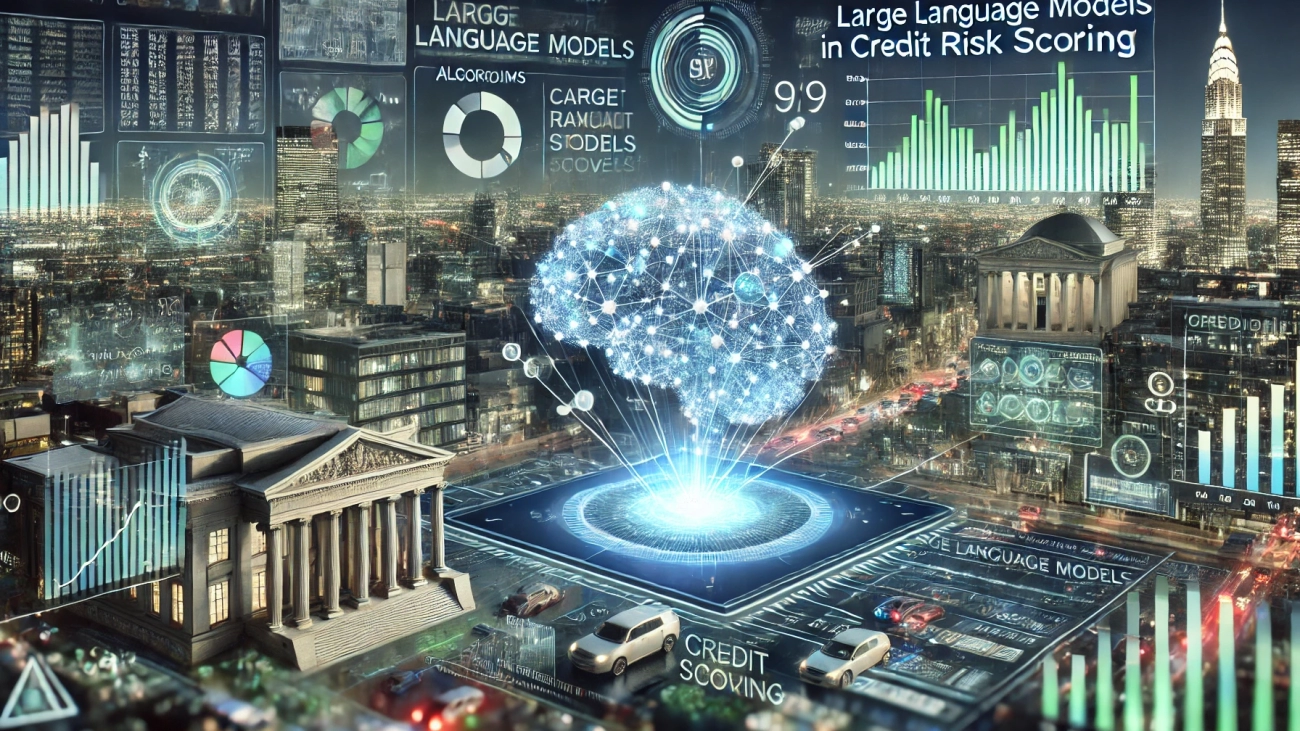Overview of Large Language Models (LLMs)
Large Language Models (LLMs), such as GPT-4, have emerged as powerful tools across various applications, including credit risk scoring. These models leverage extensive datasets and advanced machine learning techniques to understand and generate human-like text, enabling them to perform complex tasks beyond traditional data analysis. In the context of credit risk scoring, LLMs enhance the evaluation of creditworthiness by analyzing diverse data sources, improving accuracy, and reducing bias.
Applications of LLMs in Credit Risk Scoring
Data Integration and Analysis
LLMs can process both structured and unstructured data. This includes:
- Structured Data: Credit reports, transaction histories.
- Unstructured Data: Customer communications, social media content.
By integrating these data sources, LLMs provide a more holistic view of a borrower’s creditworthiness.
Bias Mitigation
Traditional credit scoring methods often reflect biases due to limited data sources or historical prejudices. LLMs help identify and address these biases by incorporating diverse data inputs and advanced analytical techniques. The Credit and Risk Assessment Large Language Model (CALM) project specifically focuses on evaluating and mitigating biases in credit assessments [1][2].
Predictive Analytics
LLMs utilize historical data and current trends to forecast future credit behaviors, such as the likelihood of default or timely repayments. This predictive capability enables lenders to make more informed decisions and tailor their lending strategies.
Enhanced Customer Insights
By analyzing customer interactions and feedback, LLMs gauge sentiment and financial behavior. This additional context helps in understanding customer attitudes towards financial obligations, enriching credit risk assessments.
Automated Reporting and Documentation
LLMs can automate the generation of comprehensive credit risk reports by synthesizing data from various sources. This reduces manual effort, enhances consistency, and streamlines the documentation process.
Psychometric Credit Risk Assessment
LLMs can be used for psychometric assessments, analyzing responses to specific questions to infer personality traits related to financial responsibility. This approach is particularly useful for assessing individuals with limited traditional credit histories, especially in developing markets [4].
Companies Leveraging LLMs for Business Process Optimization
Fintech Startups
Many fintech companies are at the forefront of using LLMs in credit risk assessment, particularly for underserved markets. These companies analyze alternative data sources to offer credit to individuals without conventional credit histories.
Traditional Banks
Established banks are integrating LLMs to enhance their credit risk processes. Adoption of LLMs helps improve risk assessment capabilities, gain deeper customer insights, and streamline compliance with regulatory requirements.
Credit Bureaus
Credit bureaus are exploring LLMs to refine scoring models and improve the accuracy of credit reports. LLMs enable these organizations to provide more comprehensive credit assessments incorporating a broader range of data.
Research Institutions and Collaborations
Academic and research institutions are studying LLM applications in credit risk scoring. Projects like CALM contribute frameworks and benchmarks for the financial industry to enhance credit and risk assessment [3].
Conclusion
Large Language Models are set to revolutionize credit risk scoring by delivering more comprehensive, accurate, and unbiased assessments. Their ability to integrate diverse data sources, predict behaviors, and automate reporting processes makes them invaluable in the financial sector. As more companies adopt LLMs, credit risk assessment is expected to become more inclusive and efficient, benefiting both lenders and borrowers. Continued research and development will further enhance LLM capabilities, leading to innovative solutions in credit risk management.
References
- TechFunnel Article. Available at: https://www.techfunnel.com/fintech/ai-in-financial-services/
- arXiv:2310.00566. Available at: https://arxiv.org/abs/2310.00566
- Hugging Face Paper. Available at: https://huggingface.co/papers/2310.00566
- CALM GitHub Repository. Available at: https://github.com/colfeng/CALM
- LinkedIn Pulse Article. Available at: https://www.linkedin.com/pulse/leveraging-ai-how-large-language-models-can-enhance-risk-srivastava
- ACM Digital Library. Available at: https://dl.acm.org/doi/10.1145/3604237.3626902
- LeewayHertz Article. Available at: https://www.leewayhertz.com/ai-in-financial-compliance/
- KMS Solutions Blog. Available at: https://kms-solutions.asia/blogs/large-language-models-in-financial-services



